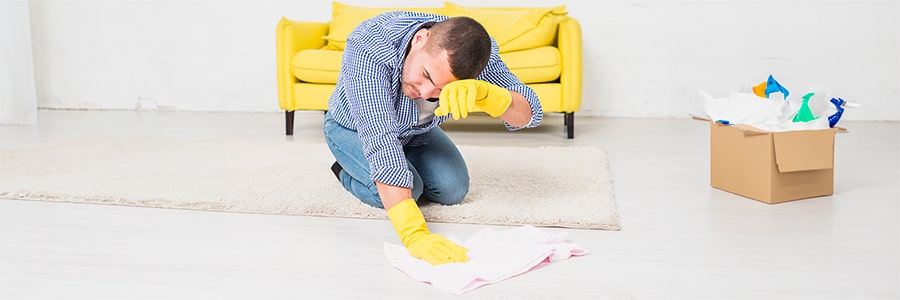Download brochure (1 mb, PDF)

What is a Housedust Allergy?
Housedust is a major cause of year-round allergies. Individuals may experience symptoms such as:
- Runny or stuffy nose
- Sneezing
- Itch in the nose or throat
- Watery eyes and asthma in housedust-sensitive persons.
What is in Housedust That Causes Allergies?
Housedust is a mixture of many different substances. It can contain different things depending on the furnishing, building materials and the presence of pets. It may contain human skin scales, food particles, cockroach parts, animal dander, mould spores or other natural organic and synthetic (man-made) materials.
A person may be allergic to one or more of these substances. The most common substance that causes an allergic reaction is the housedust mite, affecting more than 75% of people with allergic rhinitis and more than 80% with asthma.
What are Housedust Mites?
It is a microscopic, 8-legged, spider-like creature. It survives best in warm and humid weather, so it thrives in Singapore all the year round.
Mites feed on human skin scales and are found in mattresses, pillows, bolsters, bedding, rugs and carpets, upholstered furniture, curtains and stuffed toys. Housedust mites do not bite or transmit disease, they are harmful only to those who are sensitive to the protein found mainly in the mite’s fecal material.
These protein particles float in the air when the room is swept or vacuumed, or when bedding is moved. Allergic symptoms occur when these proteins are breathed in by the sensitive person.

Anti-Dust Programme
If you or your family member has housedust or dustmite allergy, minimising dustmite exposure in your home will lead to fewer symptoms and decreased use of medication.
While it is impossible to get rid of dust completely, there are effective ways to minimize exposure.
Concentrate your efforts on the bedroom as a large part of a person’s time is spent there:
- Encase mattresses, pillows and bolsters with vinyl or special mite-proof covers. Pillows filled with dacron or other synthetic materials that can be washed weekly are preferred. Mattress or pillow protectors should also be encased within the covers. The covers should be washed every three months.
- Wash bedding frequently in hot water (above 55 °C). Housedust mites are not killed by detergents.
- Use washable blankets. Comforters should be encased with mite-proof covers.
- Remove stuffed toys from the bed.
- Remove carpets. Have tiled, wooden, seamless vinyl or linoleum floor.
Try to carry out as many of the following anti-dust measures as possible:
- Clean the house while the dust-sensitive person is out. If the person doing the cleaning is dust sensitive, wearing a mask during and for 10 to 15 minutes after cleaning may help.
- Damp dusting and moppin g is preferred. Vacuuming stirs up dust and may worsen symptoms.
- Avoid upholstered furniture. Use wooden or plastic covered sofas and chairs instead.
- void heavy curtains and venetian blinds (window blinds consisting of horizontal slats). Use window shades instead. If curtains are used, wash frequently.
- Use shelves with doors instead of open shelves.
- Use pesticides (e.g. benzyl benzoate) that kill mites or chemicals that denature the allergy-causing substances (e.g. tannic acid) on carpets regularly if these cannot be removed.
Consultation for your nasal allergy can be made at Clinic 1B, Tel: 6889 4180
